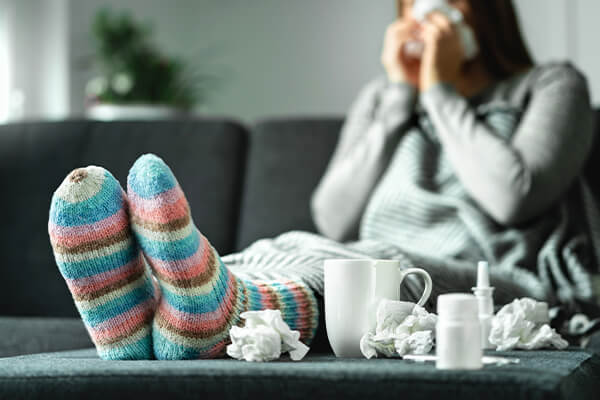Using your CPAP machine with a cold or flu

December 5th 2023
Since most people catch a cold two to four times a year, if you’re on CPAP therapy for sleep apnoea you’ll probably have to use your CPAP machine with a cold (or even flu) at some stage. Symptoms of the common cold, such as a stuffy nose, sore throat and cough, can affect both your sleep and CPAP therapy routine. What’s more, in the winter months, when cold and flu bugs tend to be at their peak, the lack of humidity in the dry, cold air can cause the nasal passages to become dry, which can make CPAP therapy more challenging.
The good news is that if you have a dry or runny nose with CPAP, or the air you breath in through your mask feels too cold and your sleep is disrupted, there are a few things you can do to help overcome these problems, including:
We’ll explore these issues in this article, along with other simple suggestions to help make using a CPAP machine with a cold or flu easier. Before we get to the potential solutions for you, let’s take a closer look at the relationship between sleep apnoea, CPAP and colds and flu.